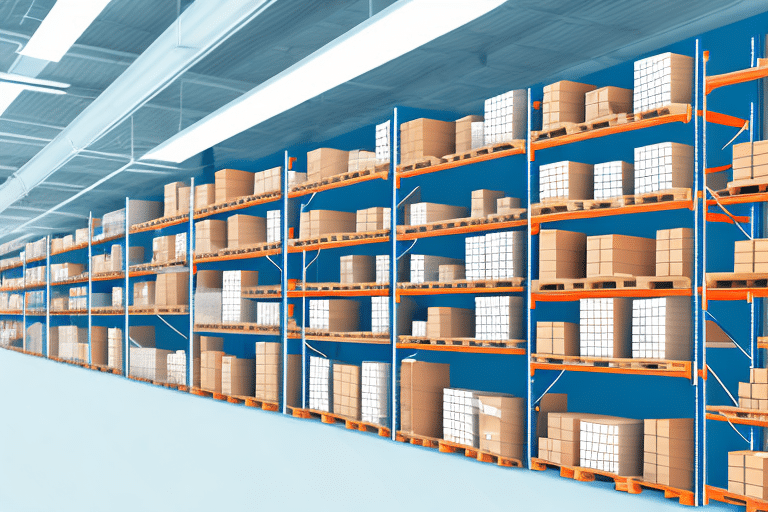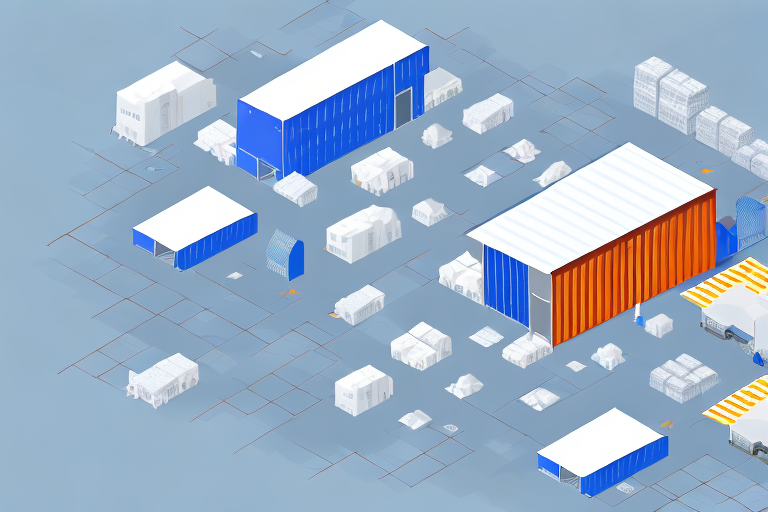Introduction to SAP Extended Warehouse Management
SAP Extended Warehouse Management (EWM) is a robust warehouse management solution designed to provide real-time visibility into inventory and warehouse operations for businesses of all sizes. It seamlessly integrates with transportation management systems, enhancing supply chain optimization. According to SAP, EWM helps companies improve inventory accuracy, streamline warehouse processes, and reduce operational costs.
Key features of SAP EWM include the ability to manage complex warehouse activities like cross-docking, wave picking, and slotting. These functionalities enable businesses to streamline operations and accelerate product movement within the warehouse. Additionally, SAP EWM offers advanced reporting and analytics tools that empower companies to make data-driven decisions, enhancing overall efficiency.
The solution is highly flexible and scalable, allowing customization to meet the specific needs of various industries. Whether managing a small warehouse or a large, complex distribution center, SAP EWM adapts to support business growth and evolving operational requirements.
Understanding the FedEx Integration with SAP EWM
Integrating FedEx with SAP EWM offers numerous advantages for businesses, including real-time shipment tracking, enhanced visibility, simplified documentation, and streamlined shipping processes. As one of the world's largest logistics providers, FedEx operates in over 220 countries, providing an extensive network that can significantly benefit companies leveraging SAP EWM.
By connecting FedEx with SAP EWM, businesses can achieve greater accuracy and efficiency in inventory management. Real-time tracking ensures optimal stock levels, preventing both stockouts and overstocking scenarios. Automation of shipping processes reduces the likelihood of errors, saving time and resources while enhancing overall supply chain reliability.
Benefits of Connecting FedEx with SAP EWM
The integration of FedEx with SAP EWM brings a multitude of benefits to businesses:
- Real-Time Shipment Visibility: Gain immediate insights into shipment statuses, enhancing tracking capabilities and customer satisfaction.
- Simplified Documentation: Automate and streamline shipping documentation, reducing manual errors and administrative overhead.
- Cost Efficiency: Minimize manual data entry, accelerate processing times, and lower operational costs through automation.
- Enhanced Inventory Management: Maintain accurate inventory levels with real-time data, facilitating better stock replenishment and order fulfillment.
According to a report by Forbes, businesses that integrate their logistics partners with advanced warehouse management systems like SAP EWM can achieve up to a 20% increase in operational efficiency.
Planning a Successful Integration between FedEx and SAP EWM
Effective planning is crucial for a successful integration of FedEx with SAP EWM. Here are essential steps to consider:
Identify Integration Requirements
Determine the specific shipping methods and services required for your operations. This includes understanding FedEx's shipping options and how they align with your business needs.
Map Out the Integration Process
Outline the necessary steps for integration, including configuring SAP EWM settings, establishing communication protocols with FedEx, and defining data exchange formats.
Stakeholder Communication
Engage all stakeholders, including employees, suppliers, and customers, to ensure they are informed about the integration process and any changes that may affect them.
Set Realistic Timelines and Goals
Establish a clear timeline with achievable milestones and allocate appropriate resources and personnel to maintain progress and stay within budget.
Configuring FedEx in SAP EWM: Step-by-Step Guide
Configuring FedEx within SAP EWM involves several detailed steps to ensure seamless integration:
- Create a Shipment Type: Define the type of shipments that will be processed through FedEx.
- Define Shipping Partners: Input FedEx as a shipping partner within the SAP EWM system.
- Create a Shipping Profile: Configure shipping profiles that dictate how shipments are handled and processed.
- Set Up Shipping Points: Establish the points from which shipments will be dispatched.
- Add Shipping Services: Incorporate specific FedEx services that align with your shipping needs.
- Configure Rate Determination: Set up how shipping rates are calculated based on various parameters.
- Establish Tracking Parameters: Ensure that shipment tracking is enabled and properly configured.
- Integrate Documentation: Automate the generation of shipping documents and labels.
- Test the Configuration: Conduct thorough testing to verify that the integration works as intended.
- Go Live: Finalize the setup and begin processing shipments through the integrated system.
For detailed instructions and screenshots, refer to the official SAP documentation on Configuring SAP EWM.
Optimizing and Managing the Integration
Optimization is an ongoing process that ensures the FedEx integration with SAP EWM continues to deliver maximum efficiency:
Continuous Process Review
Regularly assess and refine your integration settings to align with evolving business needs and operational challenges.
Employee Training
Provide comprehensive training to staff to ensure they are proficient in using the integrated system, thereby minimizing errors and enhancing productivity.
Data Analysis
Utilize SAP EWM's analytics tools to monitor shipment data, identify trends, and uncover opportunities for further optimization.
Leverage Support Resources
Maintain open lines of communication with both FedEx and SAP support teams to stay informed about updates, troubleshoot issues, and take advantage of new features.
Implementing automated processes, such as automatic shipment notifications and tracking updates, can further streamline operations and improve customer service.
Best Practices for Managing the FedEx Integration with SAP EWM
Effective management of the FedEx integration ensures its sustained success:
Monitor Integration Performance
Regularly track key performance metrics to assess the integration's effectiveness and identify areas for improvement.
Provide Ongoing Training
Ensure that employees remain up-to-date with system changes and best practices through continuous training programs.
Establish Clear Communication Channels
Facilitate seamless communication between departments to address issues promptly and coordinate efforts effectively.
Regularly Update Integration Processes
Adapt your integration strategies to accommodate new business requirements, technological advancements, and regulatory changes.
Periodic audits of the integration setup can help identify bottlenecks and implement necessary enhancements to maintain optimal performance.
Case Study: Successful Integration of FedEx and SAP EWM
Company Overview: A leading e-commerce retailer sought to enhance its logistics operations by integrating FedEx with SAP EWM.
Challenges: The company faced issues with manual data entry errors, delayed shipments, and lack of real-time inventory visibility.
Solution: By integrating FedEx with SAP EWM, the company automated its shipping processes, enabling real-time tracking and accurate inventory management.
Results: The integration led to a 30% reduction in data entry errors, a 25% improvement in shipment processing times, and increased overall customer satisfaction.
The collaboration between the IT and logistics teams was pivotal in customizing the SAP EWM solution to meet specific operational needs. Comprehensive training ensured a smooth transition, minimizing disruptions and maximizing the benefits of the integration.
For more detailed insights, refer to the case study published by SAP Customer Stories.
Future Developments and Trends in the Integration of FedEx and SAP EWM
The logistics industry is rapidly evolving, with emerging technologies shaping the future of supply chain management. Key trends expected to influence the integration of FedEx and SAP EWM include:
- Artificial Intelligence and Machine Learning: Enhancing predictive analytics for better demand forecasting and inventory management.
- Internet of Things (IoT): Facilitating real-time monitoring of shipments and assets through connected devices.
- Automation and Robotics: Streamlining warehouse operations and reducing manual intervention.
- Blockchain Technology: Improving transparency and security in supply chain transactions.
According to a McKinsey report, integrating these technologies with existing systems like SAP EWM will be crucial for businesses aiming to stay competitive and responsive to market demands.
Conclusion: The Importance of a Seamless Connection between FedEx and SAP EWM
Integrating FedEx with SAP Extended Warehouse Management is a strategic move for businesses aiming to optimize their logistics processes and enhance supply chain efficiency. This seamless connection offers real-time shipment visibility, streamlined documentation, and automated shipping processes, all of which contribute to a more responsive and cost-effective supply chain.
By following best practices in planning, configuring, and managing the integration, companies can unlock significant operational improvements and drive sustained growth. As the logistics landscape continues to evolve, staying ahead with integrated solutions like FedEx and SAP EWM will be essential for maintaining a competitive edge.








